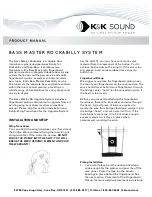
- 28 -
3. Introduction to SCPI Commands
SCPI (Standard Commands for Programmable Instrument) is standard commands for programmable
instruments based on IEEE 488.2 common commands. SCPI commands include two parts: IEEE 488.2
Common Commands and Control Commands defined for SCPI instruments.
Common Commands, as defined by IEEE 488.2, are supported by the instrument. Syntax and semantics of
common commands must follow the rules of IEEE 488.2. Common commands are generally used to control
reset, self-test and status operations in stead of measurement. For more details, please refer to chapter IEEE
488.2 Common Commands.
Control Commands defined for SCPI instruments are used to measure, read data, switch ON/OFF a function or
a mode and so on. This chapter includes the following contents.
3.1 Command Structure
The SCPI is in a tree structure. The command on the top is called “root command” or called “root” in short. To
reach command of the lowest level, user must follow its route.
Command terminator It is a symbol to end the command. For example: NL (Line break symbol, as 10 in
ASCII code).
Colon (:)
It means a command level, going to the next level.
Semic olon (;)
It means multiple levels of commands.
Question mark (?)
It means query.
Comma (,)
It is a break between multiple parameters.
Space ( )
It is a break between commands and parameters. A symbol
is used to represents
space In description of commands.
Quotation mark (“”)
It means contents of the original citation, which will not be processed by command
analysis programm.
Asterisk (*)
Commands follow an asterisk are common commands.
The following figure shows how to reach command of the lowest level by using colon and semicolon.
If sending command: AA:BB:EE;FF;GG
It means the same to send below three commands:
:AA:BB:EE
:AA:BB:FF
:AA:BB:GG











































